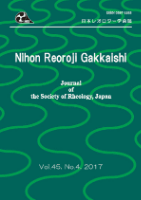
NIHON REOROJI GAKKAISHI
Scope & Guideline
Unveiling Breakthroughs in Rheological Studies Since 1973
Introduction
Aims and Scopes
- Fundamental and Applied Rheology:
The journal covers both fundamental studies of rheological properties and their practical applications in various industries, including food, materials science, and biomedical engineering. - Computational and Experimental Techniques:
Research published often employs a combination of computational models, such as molecular dynamics and numerical simulations, alongside experimental methods to investigate rheological behavior. - Multiscale Modeling:
The journal emphasizes multiscale modeling approaches to understand the complex behaviors of materials, particularly in polymer science and nanofluids. - Interdisciplinary Research:
It encourages interdisciplinary studies that connect rheology with other fields, such as material science, biology, and engineering, to explore innovative applications. - Emerging Technologies and Machine Learning:
Recent papers highlight the incorporation of machine learning and other advanced technologies in rheological research, reflecting a trend towards modernization and efficiency in the field.
Trending and Emerging
- Machine Learning and AI in Rheology:
Recent publications increasingly explore the application of machine learning and artificial intelligence to rheological problems, enhancing predictive capabilities and optimizing experimental designs. - Rheology of Complex Fluids and Soft Matter:
There is a growing emphasis on the study of complex fluids, including emulsions, foams, and gels, particularly in relation to their unique properties and behaviors. - Biological Rheology:
Research exploring the rheological properties of biological fluids and tissues is on the rise, particularly in the context of medical applications and biophysics. - Nanofluids and Advanced Materials:
Emerging studies focus on the behavior of nanofluids and the rheological properties of advanced materials, emphasizing their potential applications in engineering and technology. - Sustainable and Eco-Friendly Rheology:
There is a notable trend towards exploring sustainable materials and processes within rheology, including the use of renewable resources and environmentally friendly practices.
Declining or Waning
- Traditional Polymer Characterization Methods:
There has been a shift away from purely traditional methods of polymer characterization, such as basic viscometry, towards more sophisticated and nuanced approaches that integrate computational modeling and advanced experimental techniques. - Basic Rheological Studies without Application Context:
Papers focusing solely on basic rheological phenomena without applying findings to real-world problems or industrial contexts appear to be decreasing in frequency. - Single-Phase Fluid Studies:
Research concentrating exclusively on single-phase fluids is becoming less common as the field increasingly focuses on complex multi-phase systems that better represent real-world applications. - Low-Impact Studies in Food Rheology:
While food rheology remains a topic of interest, studies that do not explore significant innovations or applications in food science are becoming less prevalent. - Conventional Material Testing Methods:
The reliance on conventional material testing methods without the integration of new technologies or methodologies is declining, as researchers seek more innovative approaches.
Similar Journals

MATERIALS SCIENCE-POLAND
Fostering Collaboration in the World of MaterialsMATERIALS SCIENCE-POLAND, published by SCIENDO, is an esteemed open access journal dedicated to the rapidly evolving field of materials science. Since its inception in 2002 and transitioning to an open access model in 2015, the journal has been a vital platform for researchers and professionals to disseminate their findings and contribute to the scientific community. With an ISSN of 2083-134X and an E-ISSN of 2083-134X, it spans a comprehensive range of disciplines, focusing on condensed matter physics, materials science, and mechanical engineering among others. In the 2023 rankings, it holds a position in the Q4 and Q3 quartiles across various categories, showcasing its relevance and ongoing contribution to these fields. Researchers benefit from its accessibility, enabling wider reach and engagement with contemporary topics in material innovation and applications. As the journal continues to evolve until 2024, it remains a cornerstone for scholars looking to advance their knowledge and research in materials science.
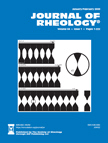
JOURNAL OF RHEOLOGY
Illuminating the Intersection of Physics and EngineeringJOURNAL OF RHEOLOGY, published by the SOCIETY OF RHEOLOGY, is a premier academic journal that has been disseminating significant research in the field of rheology since its inception in 1957. With a focus on the behavior of complex fluids and soft materials, this journal plays a crucial role in bridging the disciplines of Condensed Matter Physics, Materials Science, and Mechanical Engineering. Its esteemed ranking in the top quartile (Q1) of multiple categories highlights its impact, particularly in Mechanical Engineering and Mechanics of Materials. Researchers and professionals can benefit from the comprehensive studies published within its pages, which combine theoretical insights with practical applications in diverse industries. Although it does not offer open access, the journal remains a vital resource for those seeking cutting-edge developments and discussions in rheology. The editorial office is located in Japan, under the guidance of Ralph H. Colby at Pennsylvania State University, ensuring a strong academic foundation and international collaboration. The JOURNAL OF RHEOLOGY continues to shape the future of rheological research, making it an essential part of any scholar's library.

Extreme Mechanics Letters
Elevating Engineering Disciplines through Research ExcellenceExtreme Mechanics Letters is a distinguished scholarly journal published by Elsevier, focusing on advanced insights in the realms of bioengineering, mechanical engineering, chemical engineering, and mechanics of materials. With an impressive Q1 ranking in multiple categories and a strong representation in Scopus, this journal serves as a vital platform for researchers aiming to disseminate pioneering findings in extreme mechanics. Since its inception in 2014, the journal has rapidly established itself as a leading publication within its field, attracting high-quality manuscripts that push the boundaries of current understanding. As an important resource for professionals and scholars alike, Extreme Mechanics Letters provides valuable insights critical for driving innovation in engineering disciplines. While the journal currently operates on a subscription-based access model, it remains committed to fostering scholarly communication across the globe, ensuring that cutting-edge research reaches its intended audience.

Moscow University Mechanics Bulletin
Connecting Innovators in Mechanical ResearchMoscow University Mechanics Bulletin, published by PLEIADES PUBLISHING INC, is a dedicated journal that has been influencing the fields of mechanical engineering and mechanics since its inception. With an ISSN of 0027-1330 and E-ISSN of 1934-8452, this journal serves as a crucial platform for advancing knowledge in mathematics, mechanical engineering, and mechanics of materials. Though currently indexed in the Q4 category across these disciplines, it offers a unique space for researchers and professionals to engage with emerging theories, experimental results, and practical applications. With a converged publication history spanning from 1973 to 1987, and continuing from 2007 to 2024, the journal remains relevant in today’s academic landscape. Though it operates under traditional access models, the journal's global reach aims to connect diverse voices in engineering research. Aspiring researchers and seasoned professionals alike will find valuable insights and a robust discourse that contribute to their respective fields.
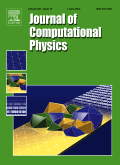
JOURNAL OF COMPUTATIONAL PHYSICS
Unveiling New Dimensions in Applied MathematicsJOURNAL OF COMPUTATIONAL PHYSICS, an esteemed publication from ACADEMIC PRESS INC ELSEVIER SCIENCE, serves as a premier platform in the field of computational physics and its interdisciplinary applications. Since its inception in 1966, the journal has provided invaluable insights and significant advancements in areas such as applied mathematics, numerical analysis, and modeling and simulation. With a robust impact factor and ranking in the top quartile across various related categories, including Q1 in Applied Mathematics and Physics and Astronomy, it is essential reading for researchers and professionals aiming to stay at the forefront of computational techniques and methodologies. Although the journal is not open access, it remains highly regarded with a reputation for rigorous peer review and high-quality publications. As the field continues to evolve, the JOURNAL OF COMPUTATIONAL PHYSICS highlights innovative research that not only advances theoretical constructs but also offers practical applications in scientific and engineering domains. For scholars and students, this journal embodies a critical resource for deepening their understanding and fostering dialogue within the scientific community.
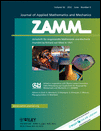
ZAMM-Zeitschrift fur Angewandte Mathematik und Mechanik
Unveiling Innovative Solutions in Applied Mathematics and Mechanics.ZAMM-Zeitschrift fur Angewandte Mathematik und Mechanik is a distinguished journal published by WILEY-V C H VERLAG GMBH, committed to advancing the fields of applied mathematics and computational mechanics since its inception in 1921. With a significant trajectory spanning nearly a century, this journal serves as a critical platform for the dissemination of high-quality, peer-reviewed research that encompasses theoretical and practical advancements in these disciplines. Currently holding a Q3 category in Applied Mathematics and Q2 in Computational Mechanics as per the 2023 rankings, ZAMM demonstrates its prominence with measurable impact in both fields, reflected in its Scopus rankings: 202 out of 635 journals in Applied Mathematics and 32 out of 89 in Computational Mechanics. Although it does not provide open access, ZAMM remains invaluable to researchers, professionals, and students seeking to deepen their understanding and contribute to the evolving landscape of mathematical applications in engineering contexts. Explore the latest insights and methodologies that push the boundaries of applied mathematics and mechanics by engaging with ZAMM’s comprehensive range of articles.
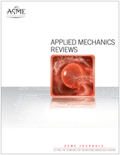
Applied Mechanics Reviews
Advancing the Frontiers of Mechanical Engineering.Applied Mechanics Reviews, a prestigious journal published by ASME (American Society of Mechanical Engineers), is an essential resource in the field of mechanical engineering. With an impact factor reflecting its high relevance and rigorous peer-review process, this journal holds a commendable Q1 ranking in the 2023 category quartiles and is positioned at an impressive rank of #7 out of 672 in Scopus rankings, placing it in the 99th percentile. The journal, with an ISSN of 0003-6900 and E-ISSN of 2379-0407, serves as a vital platform for the dissemination of groundbreaking research, offering a comprehensive overview of applied mechanics, spanning theoretical developments to practical applications. Although it does not provide open access options, the insights published within these pages are invaluable for researchers, professionals, and students eager to enhance their knowledge and stay abreast of the latest advancements. With volumes dating back to 1965 and continuing through 2024, Applied Mechanics Reviews remains a cornerstone of the mechanical engineering community, fostering innovation and collaboration across various domains of engineering.
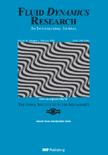
FLUID DYNAMICS RESEARCH
Fostering Collaboration in Fluid Dynamics ResearchFLUID DYNAMICS RESEARCH, published by IOP Publishing Ltd, is a pivotal journal dedicated to advancing the understanding of fluid dynamics through interdisciplinary research that spans several domains including mechanical engineering and physics. With an ISSN of 0169-5983 and E-ISSN 1873-7005, this journal provides a vital platform for researchers aiming to disseminate new findings and theoretical advancements in fluid flow and transfer processes. As of 2023, FLUID DYNAMICS RESEARCH holds a commendable position within the academic community, ranked Q3 in fluid flow and transfer processes, mechanical engineering, and miscellaneous physics and astronomy categories. The journal showcases a diverse array of articles that not only inspire collaboration among professionals and students but also ensure that theoretical and experimental studies are accessible for further development in the field. Operating from the United Kingdom, the journal offers a unique opportunity for scholars worldwide to contribute to the vibrant community dedicated to understanding the complexities of fluid dynamics, even as it anticipates converging its years of research from 1986 to 2024.
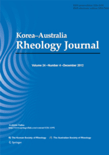
KOREA-AUSTRALIA RHEOLOGY JOURNAL
Unveiling insights that shape the future of materials.KOREA-AUSTRALIA RHEOLOGY JOURNAL, published by the Korean Society of Rheology, serves as a pivotal platform for disseminating high-quality research in the realms of Condensed Matter Physics and Materials Science. Established in 2003 and running through to 2024, this journal has made notable strides with a 2023 ranking of Q3 in both categories within Scopus, indicating its impactful contributions to the scientific community. Although currently not an open-access journal, it stands out for its rigorous peer-reviewed articles that span a diverse range of topics, fostering advancements in rheology across various applications. Researchers, professionals, and students alike can expect to engage with insightful studies and cutting-edge findings through this essential publication based in South Korea, headquartered at the Korea Science Technology Center in Seoul. As the field evolves, KOREA-AUSTRALIA RHEOLOGY JOURNAL remains a critical resource for those looking to stay abreast of developments and innovations in rheological science.
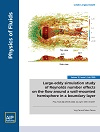
PHYSICS OF FLUIDS
Transforming Research into Fluid SolutionsPHYSICS OF FLUIDS is a premier journal published by AIP Publishing that serves as a vital resource for the fluid mechanics community. With an impressive impact factor and a consistent ranking in the Q1 quartile across multiple related disciplines—including Computational Mechanics, Condensed Matter Physics, Fluid Flow and Transfer Processes, Mechanical Engineering, and Mechanics of Materials—this journal is renowned for disseminating high-quality research in the dynamic field of fluid dynamics. Covering a wide range of topics, from fundamental fluid mechanics to advanced computational modeling, PHYSICS OF FLUIDS plays a crucial role in advancing understanding and fostering innovation in both academic and industrial applications. With its strong reputation and significant readership, this journal is essential for researchers, professionals, and students seeking to stay updated on the latest developments in fluid physics.